Formula C12H10Cl2N2 | Molar mass 253.13 g/mol | |
 | ||
Appearance Gray or purple crystalline solid | ||
3,3'-Dichlorobenzidine is an organic compound with the formula (C6H3Cl(NH2))2. The pure compound is pale yellow, but commercial samples are often colored. It is barely soluble in water and is often supplied as a wet paste. It is widely used in the production of diarylide dyes and diarylide yellow pigments used in the production of printing inks.
Contents
Preparation and reactions
3,3'-Dichlorobenzidine is prepared in two steps from 2-nitrochlorobenzene. The first step involves reduction with zinc in base to afford 3,3'-dichlorodiphenylhydrazine. This intermediate undergoes the benzidine rearrangement to afford 3,3'-dichlorobenzidine.
Aqueous solutions of 3,3'-dichlorobenzidine degrade in light to monochloro derivative. It undergoes chlorination (for example in water treatment plants) to give the tetrachloro derivative.
The most widely practiced reaction of 3,3'-dichlorobenzidine is its double diazotization to afford [(C6H4Cl(N2))2]2+. This intermediate is then coupled to derivatives of acetoacetylaminobenzene (CH3C(O)CH2C(O)NHAr).
Safety
3,3'-Dichlorobenzidine is considered a carcinogen. This compound has been shown to increase the incidence of tumors in animals. Because it is structurally similar to benzidine, a known carcinogen, it is believed that it may share a similar mechanism in causing bladder cancer in humans.
